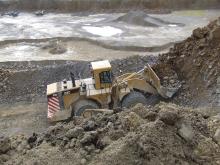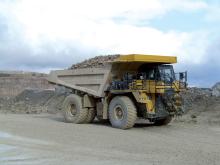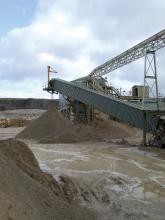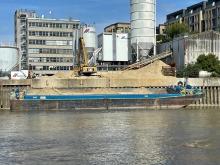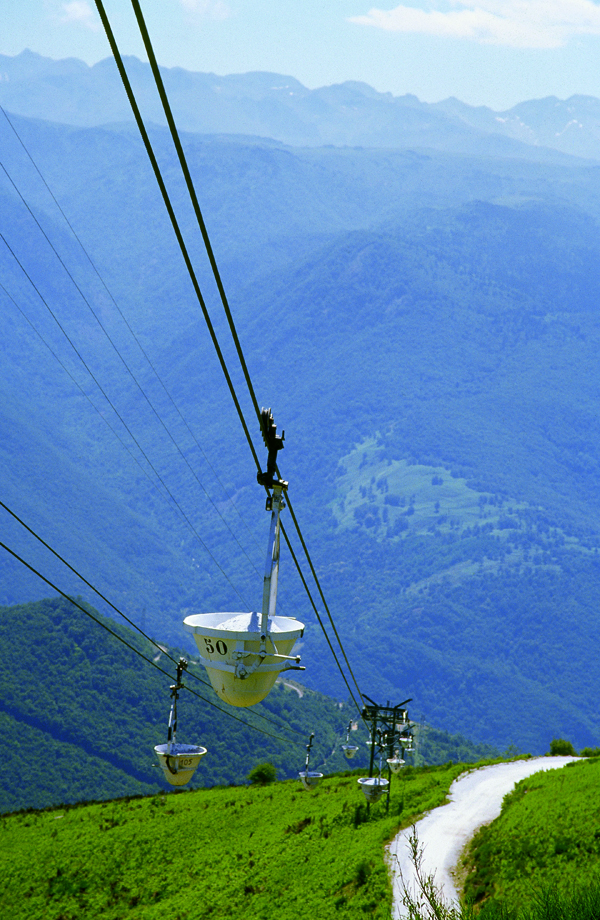
Road transport not only makes up a significant part of aggregate price but can also influence permissions for new quarries. Claire Symes reports
Transporting aggregates from the quarry to the customer is a costly business and many aggregate prices are quoted as ex-works to make the cost per tonne comparable. Road transport is often the easy solution for delivering quarried materials direct to the customer but while it is the 'simple' approach, it is not always the most popular with the public.
A quick review of local newspaper reports on plans for a new quarry usually points to residents' protests about numerous trucks 'thundering past' their homes as one of the main objections. For many quarry operators road transport is the only way to get aggregates to their market but for some sites alternative solutions are helping to open new doors - and keep existing ones open - for the industry.
Pipeline solution
Cement making has been carried out at the site since 1860, and the plant is now believed to be the largest of its type in Europe, so is not only a key part of Rugby's history but is also important to the town economically. RMC, which was later acquired by Cemex, closed its nearby cement works in Southam in the early 1990s and expanded operations at Rugby.
According to Cemex, the pipeline delivers around 245m3 of materials to the Rugby plant each hour - 1.5million tonnes per year - and if transferred to the road, would call for over 300 lorry movements per day. Using the pipeline not only reduces traffic congestion but is also virtually emission free.
The pipe, which stretches over 90km northwards from the quarry to the cement plant at Rugby, was first opened in 1960 to serve both the Rugby plant and the Southam facility.
Chalk excavated at the Kensworth site is crushed to turn it into slurry and is then mixed with 35% by volume of water to allow it to be pumped along the pipeline. Pumps at the Kensworth end pump the material at a pressure of 1800psi and it is sufficient for the material to reach Rugby without further pumping facilities.
While avoiding road transport costs, Cemex has invested over £42million (€52million) in upgrading the pipeline over the last five years. Not only has most of the pipe been replaced, it has also been upgraded with an increased diameter to take it from 250mm to 280mm, with improved durability.
According to a Cemex spokesman, the screening and use of the pipeline means that the only time the general public is aware of the presence of Kensworth Quarry is when they fly out of London's Luton Airport.
Leisure alternative
Nonetheless, removing all extracted material from the road is not always possible but by taking a multi-modal approach, it could be possible to reduce the reliance on trucks for delivery. This applies not just to virgin aggregates but also to recycled aggregates and London-based Powerday is a good example with use made of road, rail, and, more unusually for the UK, canal.
Most of the canal network in the UK is primarily used by leisure craft but Powerday, located at Willesdon Junction in North London, close to the historic Grand Union Canal, is trying to make use of the system as well as the road and rail network. Nonetheless, the use of canals is limited by funding issues.
The company has invested £12million (€15million) in developing the site, which includes a 90m wharf facing onto the canal. According to project owner Mike Crossan, the opportunities for moving waste and secondary aggregates along the 42km lock-free section of the canal are only limited by the availability of barges to carry the material.
"Canal barges may only be able to travel at around 7km/h but unlike trucks, they don't get caught up in road works or traffic congestion from accidents," said Crossan. "The other benefit is that it is a very environmentally friendly way of transporting material. The main problem for us is finding enough barges to meet the demand if all the potential jobs materialise - most of the 40tonne barges available are quite old and there is no funding available to buy new ones.
"One project underway in the Paddington Basin involves transporting 120tonnes per day of excavated ballast type material out of the site. Twelve to 14 barges could carry the material to our site but we don't have enough to service the project, so we will have to transport the material by road through central London." In Paris,
The €9million development was part of a plan to develop a new quarry at Muids-Daubeuf, a popular tourist area, without generating any extra road traffic. The gravel pit is located on a plateau that overlooks the Seine valley but is not connected by roads suitable for frequent passing of quarry trucks.
The wharf is located on the opposite side of the river to the quarry but the unprocessed aggregates from the quarry are carried there via a 7km long series of conveyor belts which passes over a suspension bridge. The conveyors even pass through a tunnel at one point in order to preserve the cliffs and grasslands in the valley. Crushing and screening is carried out at Bernières-sur-Seine before the material is transferred into barges, capable of transporting the equivalent of 200 truck loads.
Cable car
While for some quarries, the desire to use non-road transport makes both economic and altruistic sense, for others road transport just is not possible. Luzenac's Trimouns talc quarry in south west France - one of the largest in Europe - takes its name from the Langue d'Oc words Tres Monts (three mountains) and refers to the peaks which the quarry overlooks. The name is also the key to the transport issue at the site - it is located at an altitude of 1800m on the west slope of the St Barthelemy massif, which is not ideal for transporting almost 1000tonnes of talc each day by rigid dump truck.
Instead of transporting the excavated talc by road, Luzenac uses 1 cubic metre capacity mine cars transported to the processing plant located on the valley floor by cable car to move the material. The cable car journey is about 5.5km long and involves a 1.1km descent to the valley below in about 24 minutes. The same route by road is a 15km journey.
These examples are just the tip of the iceberg in the range of transport solutions used in Europe to aggregates but they prove that roads are not the only route.





